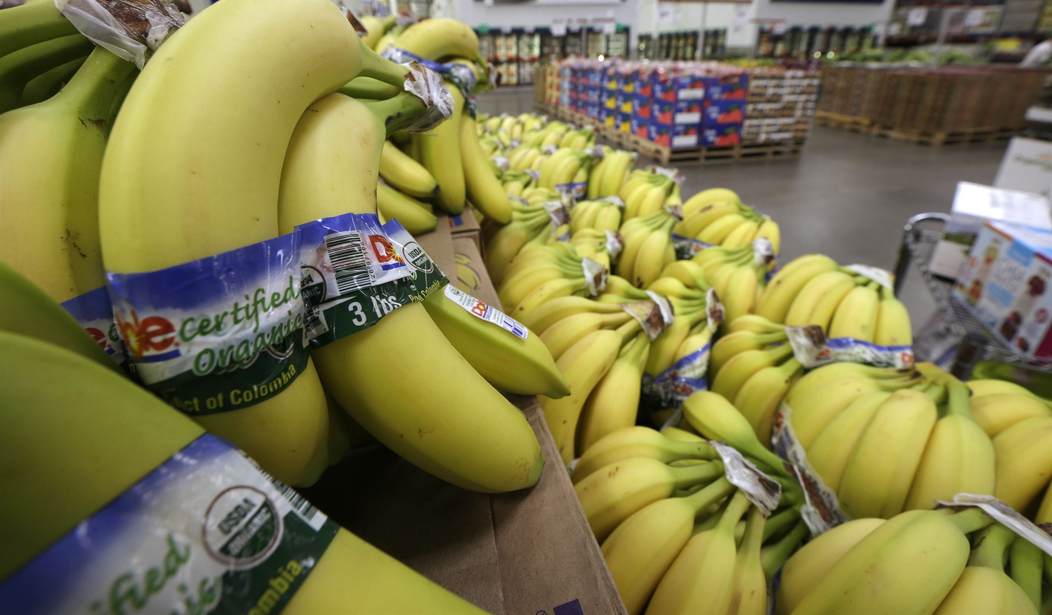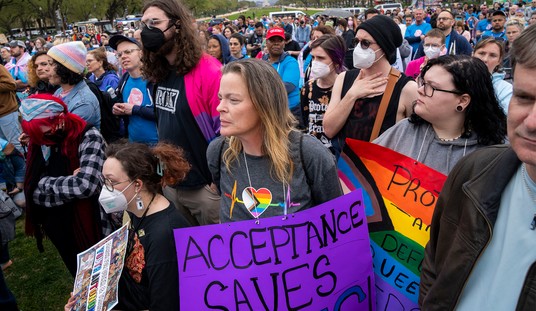Did you know that bananas are actually berries? The modern, American grocery-store banana, known as the Cavendish, is a member of the plantain family, in genus Musa, specifically Musa acuminata, a triploid plant in the Cavendish subgroup of the AAA cultivar group. But there are many, many species of bananas and plantains, and people around the world enjoy them every day, and have for thousands of years. They're a great food; babies just cutting teeth can enjoy them without difficulty, and an elderly person with bad teeth, likewise.
It's no wonder that bananas and plantains are popular worldwide. But now Time magazine is engaging in a little climate panic-mongering, claiming that our warming climate is damaging banana production.
There's just one problem: Time magazine is full of something, and it's not bananas.
A recent article in TIME Magazine, “Climate Change is Coming for Your Bananas,” claims that a warming planet is threatening global banana production, portending shortages and higher prices. This is false. Data and the history of banana cultivation all tell a different story, with yields and production numbers from the regions highlighted in the story setting new record highs in recent years.
This is far from the first and only panic-tinged from the legacy media on climate change and agricultural yields, which, despite all the dire predictions, just keep on increasing. Bananas are no exception.
In fact, according to the UN’s Food and Agriculture Organization (FAO), world banana production has more than a 8 fold increase since 1961, rising from about 22 million tons to over 129 million tons in 2023. As the FAO chart below illustrates, there has never been a period of sustained collapse. Instead, the data show robust growth—despite “shifting climate patterns.”
Here's the chart:
— Ward Clark (@TheGreatLander) August 28, 2025
As you can see, for over 60 years, banana production worldwide has been increasing, and continues to increase.
Examining the banana growing regions TIME particularly identified as having their banana crops threatened by climate change, contrary to TIME’s claims, FAO data show banana harvests have regularly set records for yield and production 1994 through 2023, the last year for which data is available:
- African banana production has grown more than 312 percent on yield gains of nearly 84 percent, with the most recent records for yields and production set in 2023;
- Central American banana production increased by approximately 60 percent on yield gains of more than 33 percent;
- And, South East Asia’s banana output expanded by about 91 percent and yields grew by almost 86 percent.
But that doesn't mean that our classic American grocery store banana, the Cavendish, doesn't face a threat. It does - from disease, not from climate change. See, before the Cavendish, the common banana in American stores was the Gros Michel banana. I remember my mother claiming that the old bananas were better than the current ones, and the Gros Michel is said to have been creamier and sweeter than the Cavendish. But like the Cavendish, it was grown from cuttings, making each plant essentially a clone.
In biology, diversity really is a strength - especially genetic diversity. These bananas and our current bananas have none. So when a disease hit, specifically the Panama Disease, caused by the soil-borne fungus Fusarium oxysporum, the Gros Michel bananas were largely wiped out. By the mid-1950s, they were all but gone. This led to the ascendance of the Cavendish.
Time magazine is sounding the alarm now, claiming that climate change could lead to the resurgence of Panama disease, which may do unto the Cavendish what it did to the Gros Michel. And well it might, but not because of the climate.
TIME’s false story of banana collapse leans heavily on the specter of crop disease, specifically Panama Disease (Fusarium wilt), saying: “Now, as climate change accelerates, the fungus [Panama Disease] is spreading more rapidly, devastating banana farms in Asia and threatening to reach Latin America, which supplies most of the world’s exported bananas.”
This is extremely misleading. Panama Disease’s spread is not due to climate change—it’s a consequence of monoculture and global trade. The disease was first identified in the 1870s, when the planet was notably cooler than today. Its spread in the modern era is entirely due to the movement of contaminated soil, tools, and plant material between farms and continents—a byproduct of globalization, not the weather.
In fact, the International Institute of Tropical Agriculture specifically points out, “climate change has not been identified as a primary driver of Fusarium wilt outbreaks.” Instead, biosecurity lapses, monoculture, and poor agricultural practices are the main culprits. If TIME were serious about banana security, they’d be calling for genetic diversification and better quarantine measures—not virtue signaling about carbon dioxide emissions.
In any matters of agriculture, having a science background myself, I'll take the word of the International Institute of Tropical Agriculture over Time magazine, thank you very much.
Read More: Is Climate Science Now the Law? Not Here in the US, It Isn't.
A Great Scientific Revolution Saved Millions of Lives. Activists Deny It.
If the worst happens and the Cavendish banana joins the Gros Michel in history, there are many other species of banana available, and many of them are already delicious. I've a quiet fondness for the small red bananas one often sees in grocery stores, even here in Alaska. While working in Puerto Rico some years ago, I was treated to the traditional dish "mofongo," which is made with mashed plantains mixed with garlic, olive oil, and bacon, usually served with fried chicken or beef strips, and I can tell you that's some fine eating.
So, relax; there will be bananas. As I'm continually pointing out, we solve today's problems with tomorrow's technology, and that applies here, too; better horticulture, most notably prevention of cross-contamination, will be what saves the Cavendish, not eating bugs and cramming ourselves into 15-minute cities. And even if the Cavendish does fade away, we can comfort ourselves knowing that when it comes to bananas, we really can celebrate diversity.
This seems appropriate.















